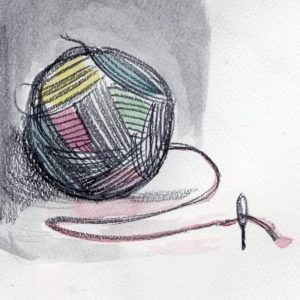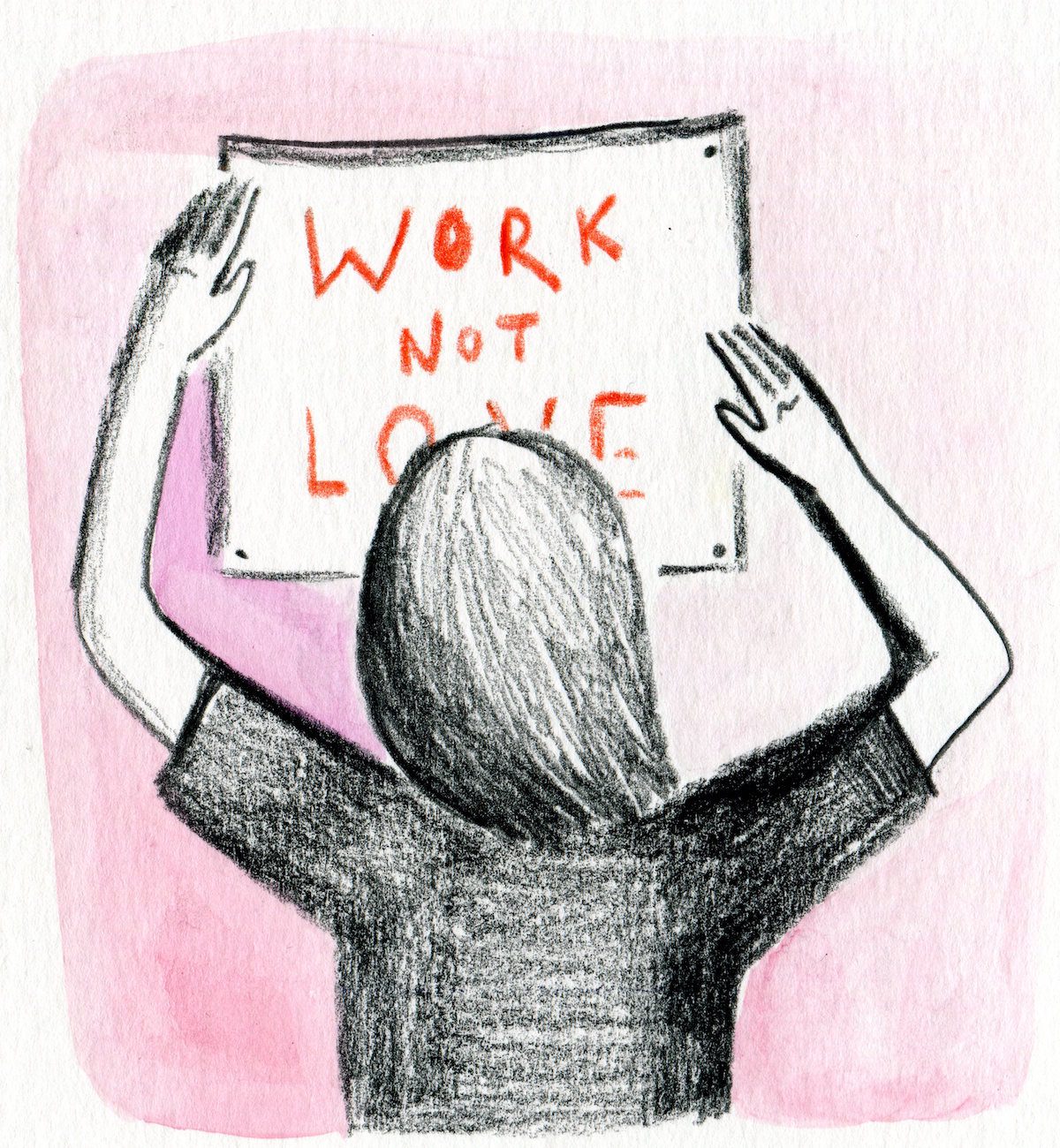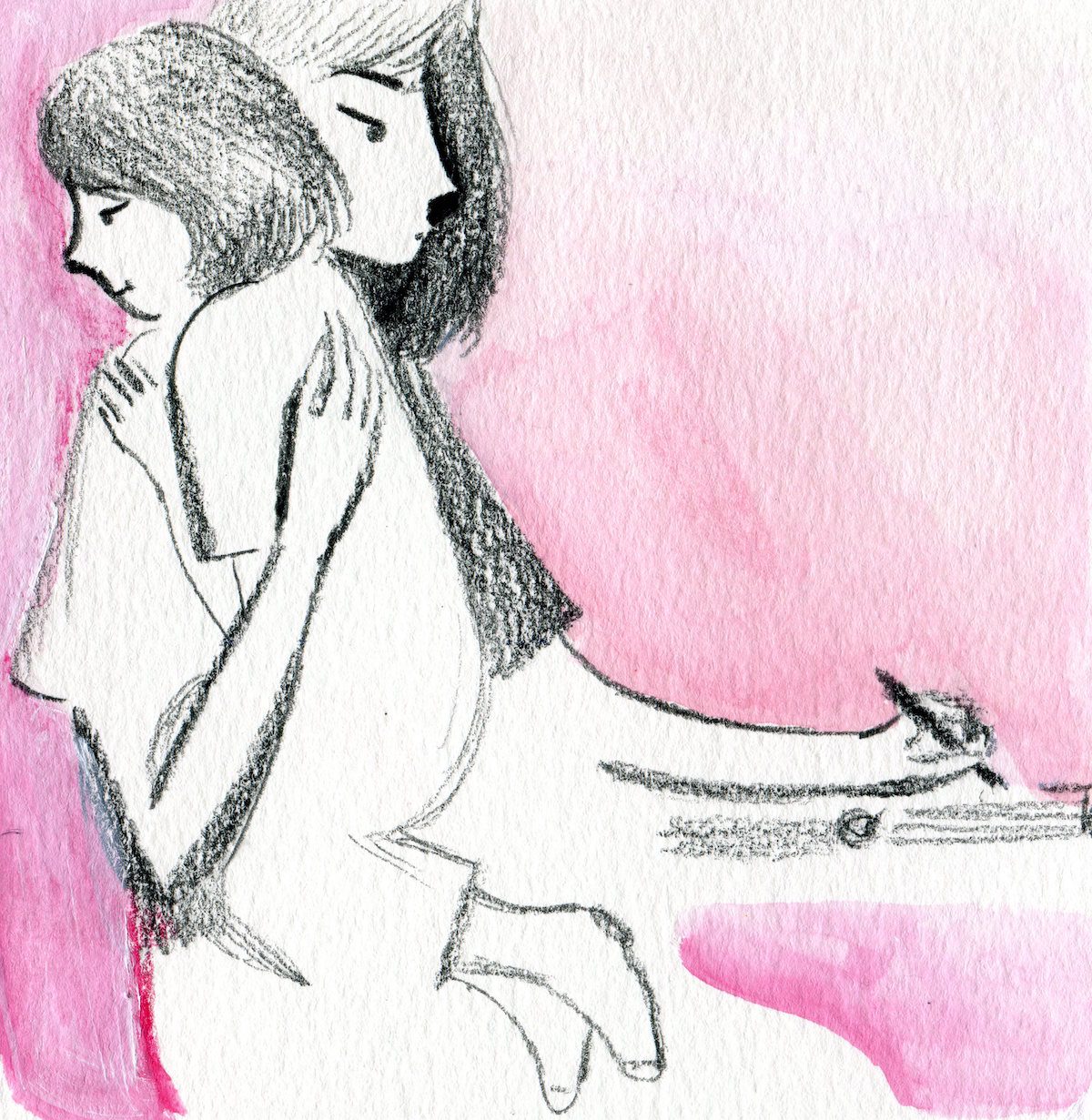
I wake up every day at 5 a.m. to write. I greet the lingering darkness, and sit in my office as it gradually fills with the peachy light of sunrise. It’s a habit I started years ago when I was trying to finish revising my first manuscript. It was the only time when both my then-two-year old and my husband were blissfully asleep. I could make my coffee and sit in a quiet pool of light in an otherwise dark world. It was time that belonged to me and no one else. I wouldn’t be asked anything; there would be no one to soothe or hug or assure or engage with. It was time alone, a bubble that lasted an hour or two.
I didn’t feel guilty about taking this time because they were asleep, as they should be. I didn’t feel guilty about taking this time because it didn’t feel like taking at all. It was time that, if anything, I took from my own sleep balance, though after a while I realized that the only way this was a sustainable practice was if I shifted my bedtime significantly earlier. So for the past three years, I am in bed by nine and awake at five. It’s a habit that works.
Over the last year, my family has been less consistently asleep in the morning. I feel resentment every time someone gets up before or with me and encroaches on my time. My frustration kicks every time that someone pads into my office before 6:30 a.m. in the morning, asking for something.
Rationally, I know the child is blameless. Sometimes she wakes up early. She doesn’t want to be alone. More specifically, she wants “mama time,” which I feel obligated to give her because I work full time and she is in childcare. I live in a world that tells me that this is selfishness, this is monstrous, this is flawed. I let other people take care of my child during working hours, five days a week, and it is a privilege to do so (even though we can barely afford it). Even though working is part of what keeps me alive and our family needs the money I earn. Even though I know all of that, a voice says that I am failing her, failing myself and the institution of motherhood, by not being a stay-at-home mom, like mine was.
The child is also not even five; she’s still separating her identity from my body. I forgive her and I resent her, but the forgiveness weighs more. I know enough to know that it is not a child’s fault for being needy. And I cannot find the discipline or the self-absorption to turn her away with any regularity.
Then there is my husband. He’s been getting up early this year to go to the gym. When he breaks my solitude, I am less forgiving. I love him, but I sometimes resent his intrusion. Particularly if it’s a question or an issue that he needs my help with.
My husband changed diapers, and never refers to staying home with our daughter as “babysitting.” He rarely complains when I leave him home with her to attend writing group, or a friend’s book launch, or even for purely social reasons like dinner or drinks without him. He will do nearly any household chore that I ask him to do. He is a supportive, intelligent, caring partner. And yet. He shares the propensity for what Rufi Thorpe called “the leveraging power of ineptitude,” in her Vela magazine essay, “Mother, Writer, Monster, Maid.” What I mean is, there are many things my husband is capable of doing, and then there are are things he doesn’t believe himself capable of, or has never had to become capable at. I have become more than competent at so much of our domestic lives. Every week, I see another essay or study about the domestic inequality in opposite-sex marriages. Women who live with grown men do more housework than single mothers. Working mothers spend as much time tending to their children as stay-at-home mothers spent in the 1970s. American men don’t have close friendships with other men, using women for emotional labor instead. I recognize some of these inequalities in my marriage, but it has been this way so long between us, I don’t remember when it began.
In Dept. of Speculation, Jenny Offill’s unnamed narrator claimed that she would never get married or have children. “In her youth, she posted a sign reading ‘WORK NOT LOVE!’ over her desk and dreamed of being an art monster… Women almost never become art monsters,” she explains, “because art monsters only concern themselves with art, never mundane things. Nabokov didn’t even fold his own umbrella. Vera licked his stamps for him.”
I didn’t encounter the art monster through Offill. I only found the reference years later, researching the concept and realizing that she was its most recent famous genesis. I found the art monster through Rufi Thorpe’s essay about her longing to keep her creative self intact in the face of new motherhood.
Thorpe has two children, who at the time of her writing were three and ten months old, respectively. In “Mother, Writer, Monster, Maid,” she muses on her position now, as a woman with a creative spirit whose purpose seems to be to take care of everything and everyone else in her house. Her husband and two boys are the loves of her life, and yet, she confesses that she wouldn’t choose this state of servitude again. She settles on the idea that rather than become monsters, mother writers (or artists of any stripe) must seek “the balance between selflessness and selfishness,” and that her quest for that equilibrium itself is worthy of inquiry.
When I was pregnant, my best friend Alice told me that she loved being a working mom. I thought, condescendingly, that Alice was simply telling herself that. Being raised by a stay-at-home mom had always been framed as a blessing to my brother and me. My mom’s decision was venerated in my family, at least, as the “right” way to do motherhood. I assumed that most working moms would choose to stay home if they could, that working outside the home was a painful sacrifice that some mothers made, thanks only to capitalism.
Then I had a baby.
So much of motherhood, especially early motherhood, was a feast of my own snide words. I was wrong about almost everything, including my belief that staying home and being the child’s primary caregiver would satisfy me the way it had seemed to satisfy my mother. Alice had been right about so many things (including the epidural). I was lucky; I worked part-time for the first three years and luxuriated in the balance between my mom-life and my own life. Working gave me time where I could be an adult, perceived as an adult instead of the infantilized state of mom.
Claire Dederer wrote last year for the Paris Review about the “art of monstrous men.” Her monstrous men—the kind who do bad things but make good art—weren’t mere neglectful fathers. They weren’t men who paid more attention to their work than their children. They were outright abusers, accused child rapists. Woody Allen, for example, or Roman Polanski. What to do when you believe their survivors but you still like Manhattan? She wasn’t talking about domestic monstrousness because, short of abuse, we don’t define male domestic monstrousness. A man who passively refuses to do his share of the work in his house is not a monster; he’s average.
There is a different measure for what we call monstrous in women. Women are monstrous for longing to create something beyond or in addition to their domestic lives; men are not monstrous until they’ve abused multiple women. (Our justice system seems eager to remind me lately that most men get one “free” rape, like the bus driver who raped a teenage girl.) And it’s not clear that most people put Allen firmly in the monstrous category. Indeed, much of Hollywood continues to insist on his innocence, even as it appears public patience with him is waning.
Monstrosity literally means unsightly, large. Monstrousness is about narcissism, the ability to prioritize ones’ pleasure above others’ pain, suffering, and/or needs. There is a huge matter of degree between the rapist’s monstrosity, and the mother who choses, as I have occasionally, to write when her child wants to be with her. There’s no comparison between what we’ve done. Yet the hulking will it takes to prioritize ourselves over others is not dissimilar. The size of this entitlement, and our resulting actions, are different. The impact is different (benign neglect versus active harm). But some measure of entitlement is essential to monstrousness. On those mornings when I am interrupted, I want to understand this kind of entitlement. I want to find its molten core inside of me, harness it for a while, get to know its contours and its heat. I want to mine it. I want to learn how to take more time and space for myself, and feel less guilty when I do.
Children, not women, define motherhood. Our cultural obsession with raising perfect children has eclipsed our interest in women as a class, and mothers in particular. That children can eclipse their mothers’ personhood seems baffling until you experience how the world both talks and doesn’t talk about mothers. Mothers navigate what I’ll call the martyr/monster dichotomy, one less familiar but just as potent as the virgin/whore. A righteous mother sacrifices her identity on the altar of her children, martyring herself for their needs. We call this sacrifice because we don’t value the work that she’s doing. Raising children isn’t perceived as an artful, rigorous creative process, even though it is one. We see the ripple effect of the devaluation of motherhood in lower wages for women who have children (while men get raises once they have them). We see that ripple in article after article about “having it all,” and “invisible labor,” which remind us that while women have increasingly taken on traditionally “male” work, men with female partners have taken very little of the traditionally feminine caregiving and housework.
On the other side are the monster mothers: selfish, “abandoning” their children (often to childcare professionals), seeking fame, success, or a state of independence that is unseemly for any woman, but unforgivable for a woman with children.
I knew about the art monster as a girl, though I didn’t have a name for it. I was driven, obsessed entirely with becoming a Broadway actress. Even as a little girl, I knew that I could never be that actress I imagined with a baby on my hip. “I’m too selfish,” I explained to anyone who quizzed me about how many children I wanted to have. “I cannot put my life on hold for a child, and so I cannot have one.”
Even at nine years old, I could see the requirements of American motherhood were more than I wanted to give. I wanted a life of my own, a self-directed, art-making life. It seemed borderline abusive to subject a child to my ambition. The responsible choice was not to have any.
In my early thirties, I went from a solid no on children to a softer maybe.
The same month that I learned I was pregnant with my daughter, I received an acceptance to an MFA for creative writing. I was thirty-three, facing two seemingly incompatible lives: my artist life and my mother life. In my idealism, I deferred the MFA acceptance a year, thinking that I would have time and the resources to return to writing and school once my daughter was one. While I returned to writing much improved after my daughter’s first birthday, I never did get that MFA.
I am looking for a satisfying equipoise; someplace where I can be a mother and a writer without being monster or maid. I am looking for a paradigm that honors the creative work of parenting, allows more adults to see its intrinsic value, and doesn’t elevate it above childlessness. I want mothers and non-mothers, parents and non-parents, to value each others’ contributions in all the areas that make a life rich and rewarding. I don’t want to be a martyr or a monster. I want to be human.
For at least the past three years, I’ve been obsessed with the life cycle of a caterpillar. It is the perfect metaphor for many things, including the creative process. The caterpillar eats and eats until it makes its cocoon and then it eats some more. Inside the cocoon, it eats itself. The caterpillar digests itself into an imaginal goo where imaginal cells direct the goo to form into another thing. The only other cells that don’t dissolve are the brain cells, which means the butterfly might still remember its caterpillar life.
So often, I have thought of the caterpillar, eating itself to become a new thing. I thought of it like an alchemy, a metamorphosis, the ability to change oneself into a new form. The caterpillar has been my metaphor for surviving sexual abuse, for writing my memoir, for growing up. I wonder if it is also a metaphor for motherhood. We are told to eat ourselves, to digest what’s young and selfish and dangerous. We are trained to cannibalize everything we were once good at toward a greater purpose, a future good.
Mothers don’t have to devour what we were before we became mothers, though we might. I still remember my life before motherhood. But, like the butterfly, that body and state of mind are lost forever to me. I was wrong to think that I couldn’t be a working artist and a mother. I didn’t know that to mother could be an artistic practice of its own.
Can I hold onto my caterpillar life? Do I even want to? Or has this winged body became both my prison and my liberation?
***
Rumpus original logo and art by Aubrey Nolan.
***
The Thread is a monthly literary conversation, developed for The Rumpus and edited by Leigh Hopkins. Send us what you’re reading that you can’t stop thinking or talking about to mkorbel@therumpus.net, or reach out to Marissa on Twitter or Facebook, and she just might pull the threads of it apart for you in a future column.






